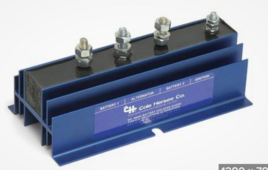Vicad88
New Member
Hello,
I have a 24v system in my boxtruck conversion with 3080w of panels. The vehicle also has 3 standard lead acid batteries for starting the engine.
I replaced the LAs a few months ago, and I noticed that both the positive and negative are attached to the first battery, and they are chained from there. I wasn't able to fix it at the time, and I admittedly should have addressed it before now, but here we are.
My root issue is the vehicle batteries are slow draining to the point it won't start without a jump. I also have a camera system that I would like to leave running, which will further tax the batteries a bit.
My first question is: What would be the best way to extend the length on the battery cable from the vehicle so I can get them connected on opposite ends of the set? Better to do pos or neg or does it matter? Assume I won't be able to pull a new wire.
My other questions: I would like to add a charge line from my setup in the house to the vehicle batteries. It would not need to be much/fast, just enough to keep them topped off. I assume I would need some sort of isolator to prevent it from trying to draw from the house batteries and burning out the wire/popping the fuse? I am using a Victron Orion 24 to 12 70amp for my 12v stuff. Could I run the line off of that at the blade fuse block? This will be about a 30ft run for sizing.
Thanks for your help in advance!
I have a 24v system in my boxtruck conversion with 3080w of panels. The vehicle also has 3 standard lead acid batteries for starting the engine.
I replaced the LAs a few months ago, and I noticed that both the positive and negative are attached to the first battery, and they are chained from there. I wasn't able to fix it at the time, and I admittedly should have addressed it before now, but here we are.
My root issue is the vehicle batteries are slow draining to the point it won't start without a jump. I also have a camera system that I would like to leave running, which will further tax the batteries a bit.
My first question is: What would be the best way to extend the length on the battery cable from the vehicle so I can get them connected on opposite ends of the set? Better to do pos or neg or does it matter? Assume I won't be able to pull a new wire.
My other questions: I would like to add a charge line from my setup in the house to the vehicle batteries. It would not need to be much/fast, just enough to keep them topped off. I assume I would need some sort of isolator to prevent it from trying to draw from the house batteries and burning out the wire/popping the fuse? I am using a Victron Orion 24 to 12 70amp for my 12v stuff. Could I run the line off of that at the blade fuse block? This will be about a 30ft run for sizing.
Thanks for your help in advance!




